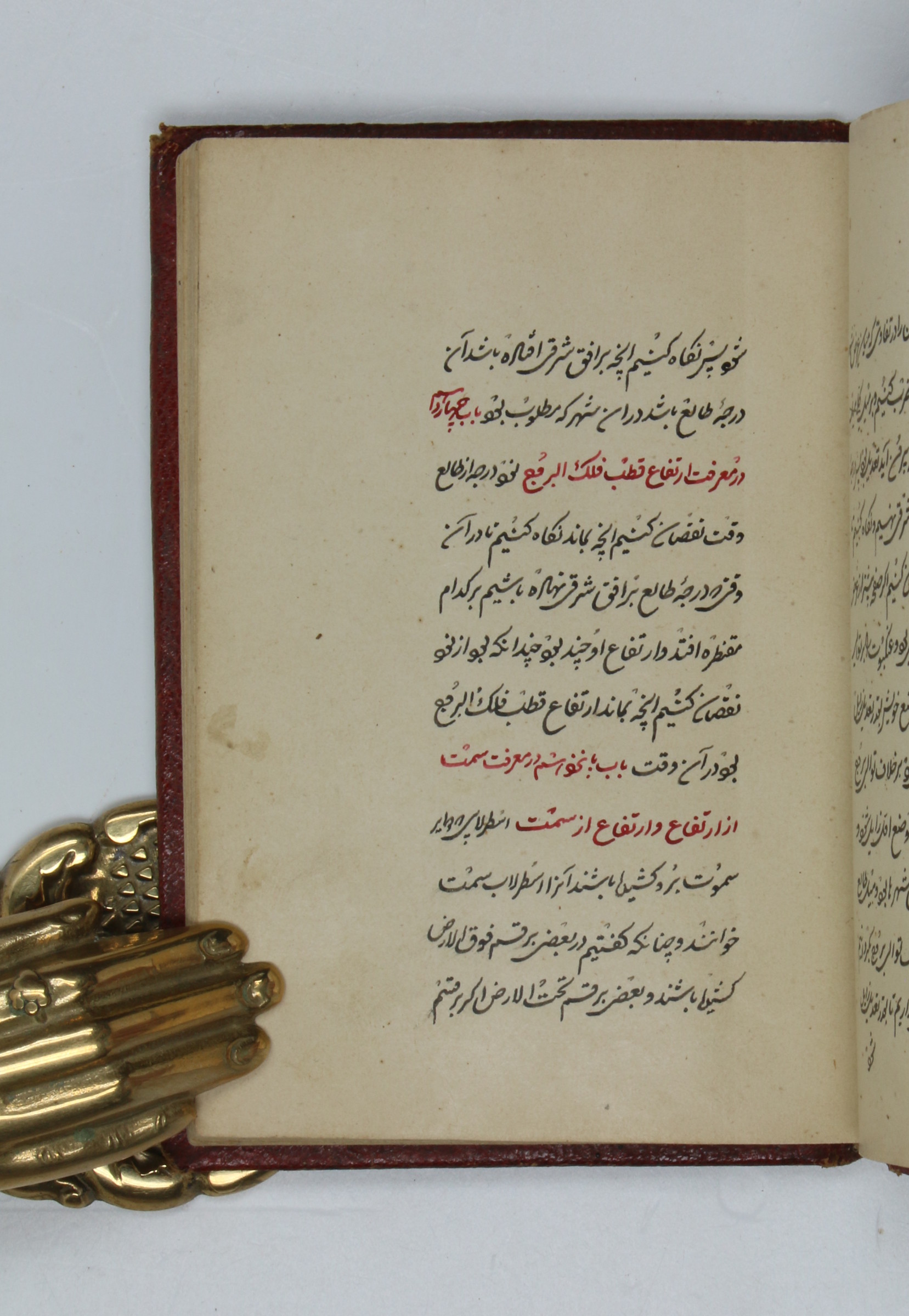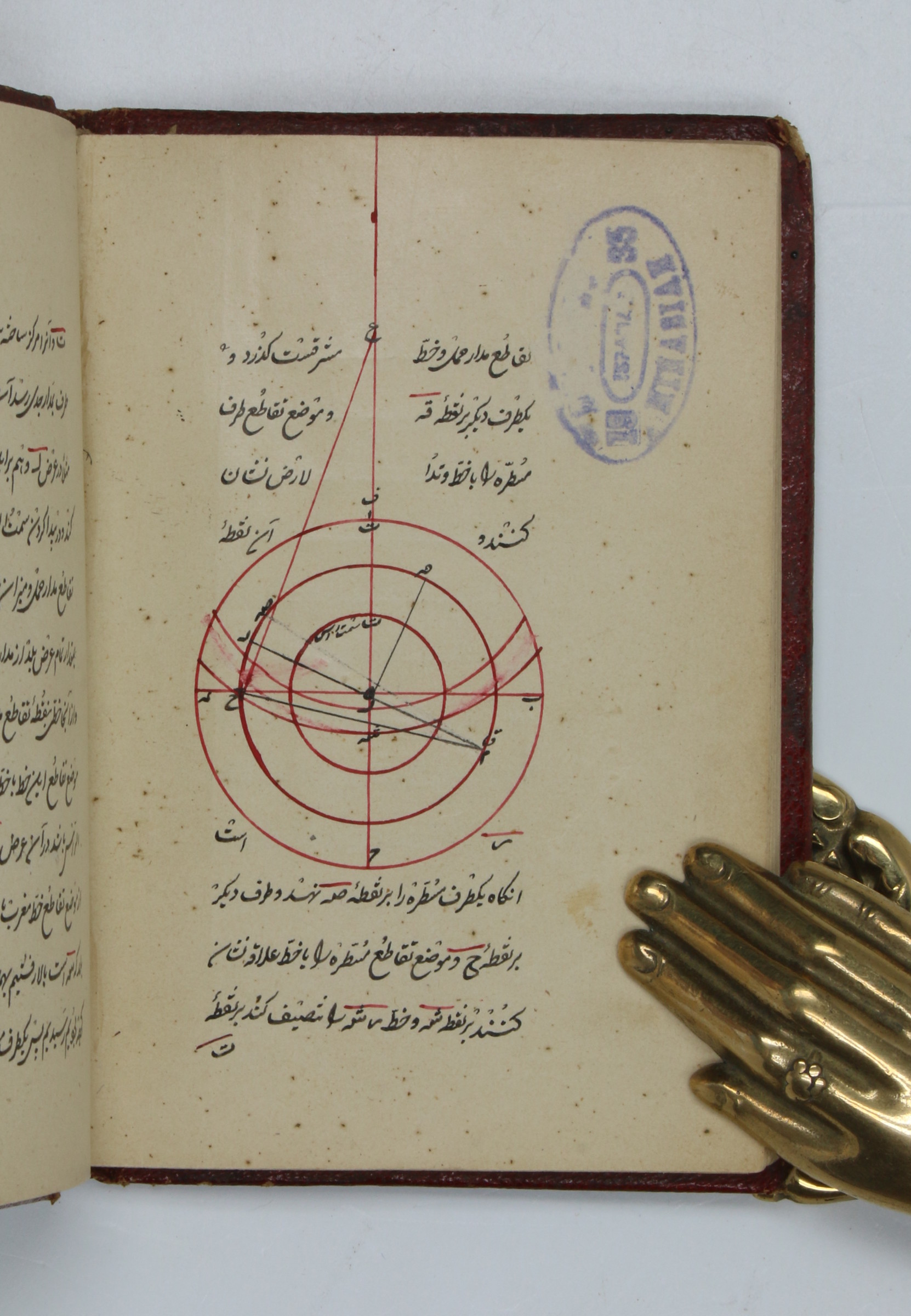Al-Tusi on the astrolabe
Bist bab dar ma'rifat-i ustrulab [and] Dar ilm usturlab. [Twenty chapters on the knowledge of the astrolabe, and, A treatise on the science of the Astrolabe].
12mo (85 x 124 mm). 60 ff. Persian manuscript on paper. Black nasta'liq script with important words and phrases picked out in red. With several diagrams in red ink, including one detailed diagram of an astrolabe. Contemporary full red morocco.
€ 5,000.00
Perhaps the most widely used scientific work by the Persian polymath Nasir al-Din al-Tusi (1201-74). Al-Tusi's contribution to astronomy, astrology, the sciences, and indeed literature is difficult to overstate; this work on the astrolabe was used extensively by contemporaries and across the centuries following his death, and provided source material for several important commentaries. He is considered the father of trigonometry (cf. GAL I, 509), and worked extensively on planetary motion, and while some of his more abstract works are perhaps better known, it is important to recall that the astrolabe was the tool at the centre of much of his success and work.
This text is a good example of the author's Persian writing and his fluency in rendering Arabic tradition into Farsi, a task at which he excelled. With around 150 attributed works, al-Tusi changed to face of both Arabic and Persian scientific literature; this is a nice piece of that legacy.
The second text bound in this manuscript is also on the topic of the astrolabe, and boasts several high-quality diagrams of the geometry of astrolabes, and features one large diagram of the face of an astrolabe itself.
Very gentle external wear, one page soiled, otherwise beautifully preserved.
GAL I, 509.
















